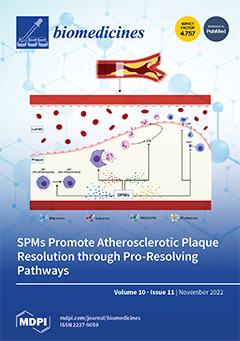Aims: Chronic diabetes complications, including diabetic nephropathy (DN), frequently result in end-stage renal failure. This study investigated empagliflozin (SGLT2i) effects on collagen synthesis, oxidative stress, cell survival, and protein expression in an LLC-PK1 model of DN. Methods: Combinations of high glucose (HG) and
[...] Read more.
Aims: Chronic diabetes complications, including diabetic nephropathy (DN), frequently result in end-stage renal failure. This study investigated empagliflozin (SGLT2i) effects on collagen synthesis, oxidative stress, cell survival, and protein expression in an LLC-PK1 model of DN. Methods: Combinations of high glucose (HG) and increasing empagliflozin concentrations (100 nM and 500 nM), as well as combinations of HG, H
2O
2, and empagliflozin, were used for cell culture treatment. The cell viability, glutathione (tGSH), ECM expression, and TGF-β1 concentration were measured. In addition, the protein expression of Akt, pAkt, GSK3, pGSK3, pSTAT3, and SMAD7 was determined. Results: The addition of both concentrations of empagliflozin to cells previously exposed to glucose and oxidative stress generally improved cell viability and increased GSH levels (
p < 0.001,
p < 0.05). In HG30/H
2O
2/Empa500-treated cells, significant increase in pSTAT3, pGSK3β, GSK3β, SMAD7, and pAKT levels (
p < 0.001,
p < 0.001,
p < 0.05) was observed except for AKT. Lower drug concentrations did not affect the protein expression levels. Furthermore, empagliflozin treatment (100 nM and 500 nM) of HG30/H
2O
2-injured cells led to a decrease in TGF-β1 levels (
p < 0.001). In cells exposed to oxidative stress and hyperglycemia, collagen production remained unchanged. Conclusion: Renoprotective effects of empagliflozin, in this LLC-PK1 cell model of DN, are mediated via activation of the Akt/GSK-3 signalling pathway, thus reducing oxidative stress-induced damage, as well as enhanced SMAD7 expression leading to downregulation of TGF-β1, one of the key mediators of inflammation and fibrosis.
Full article






